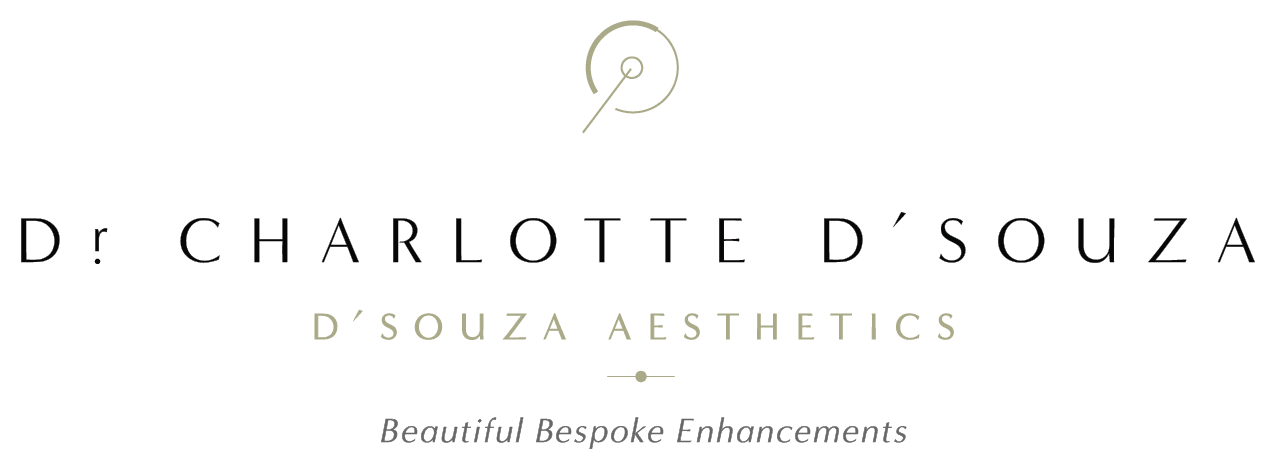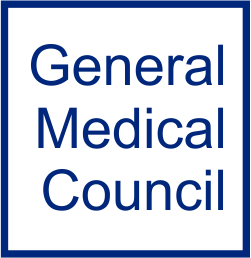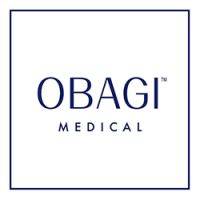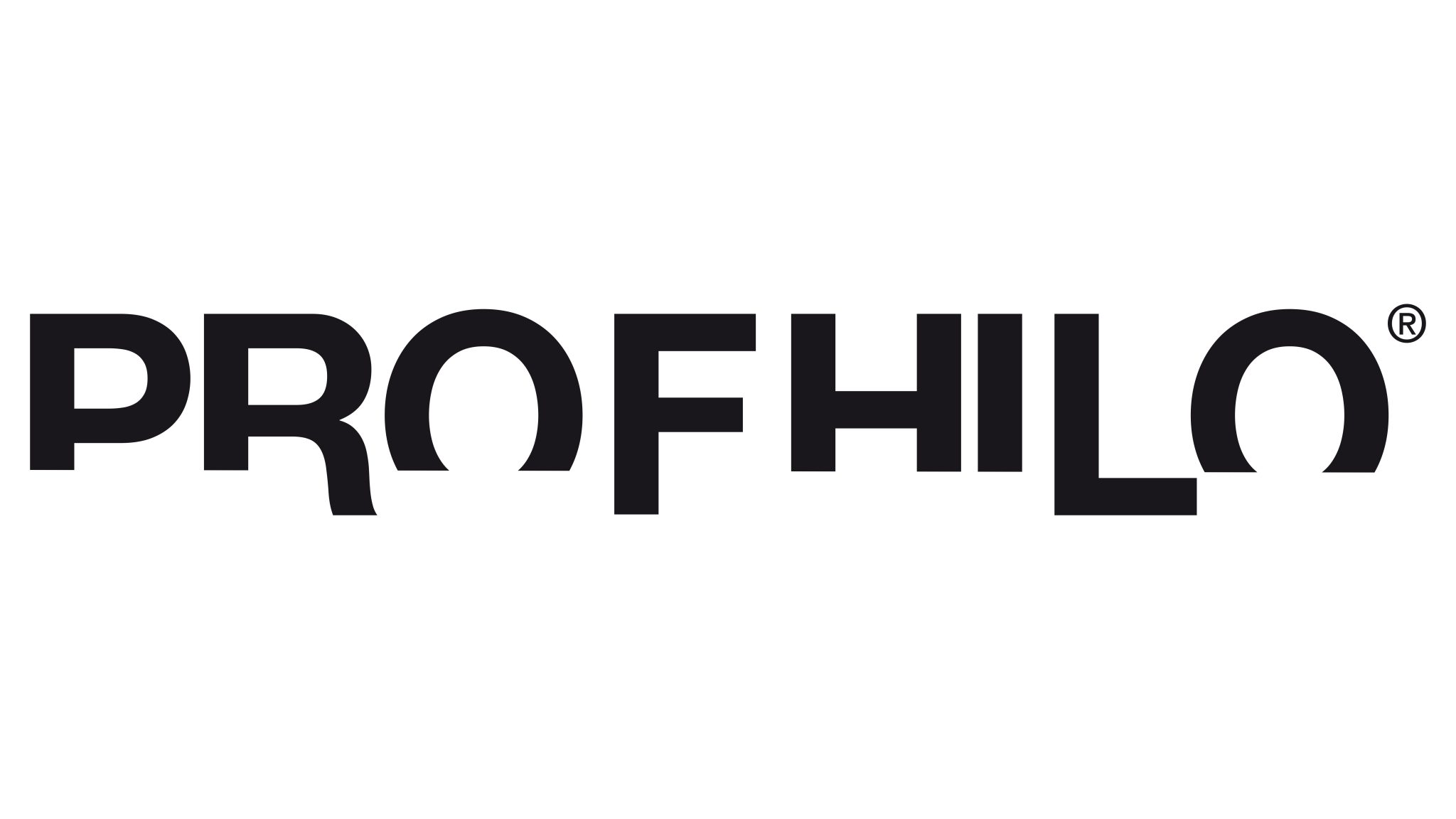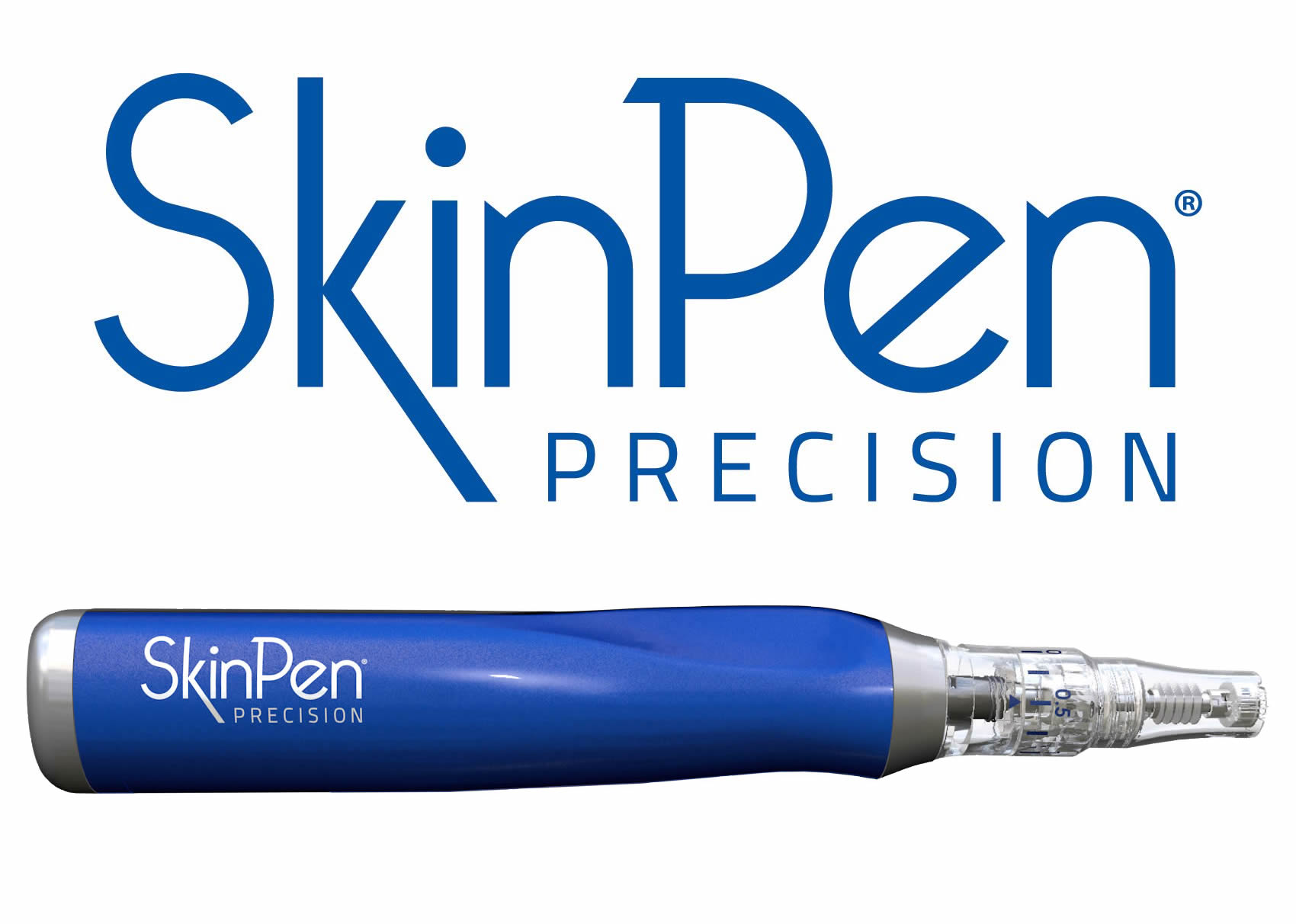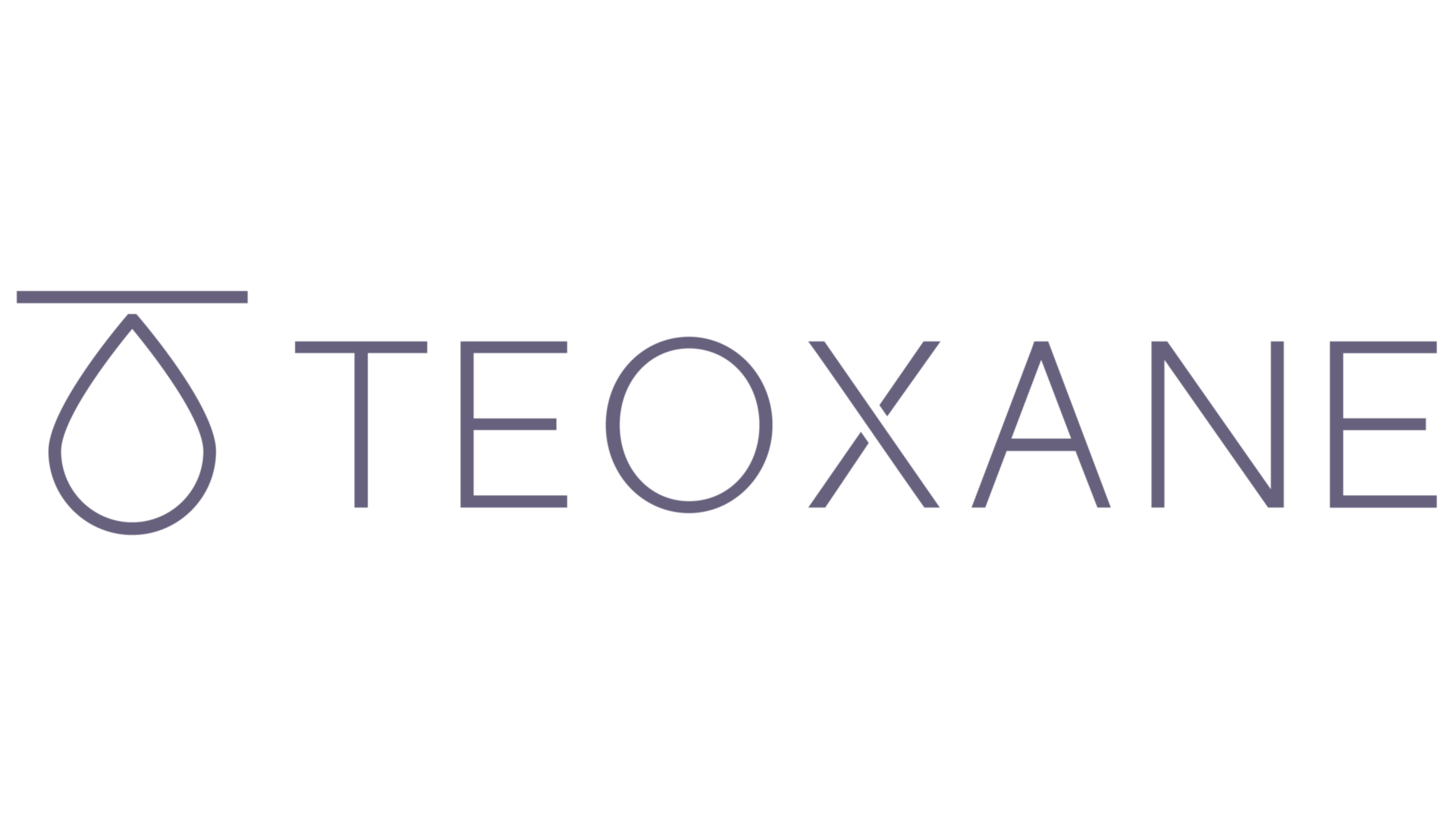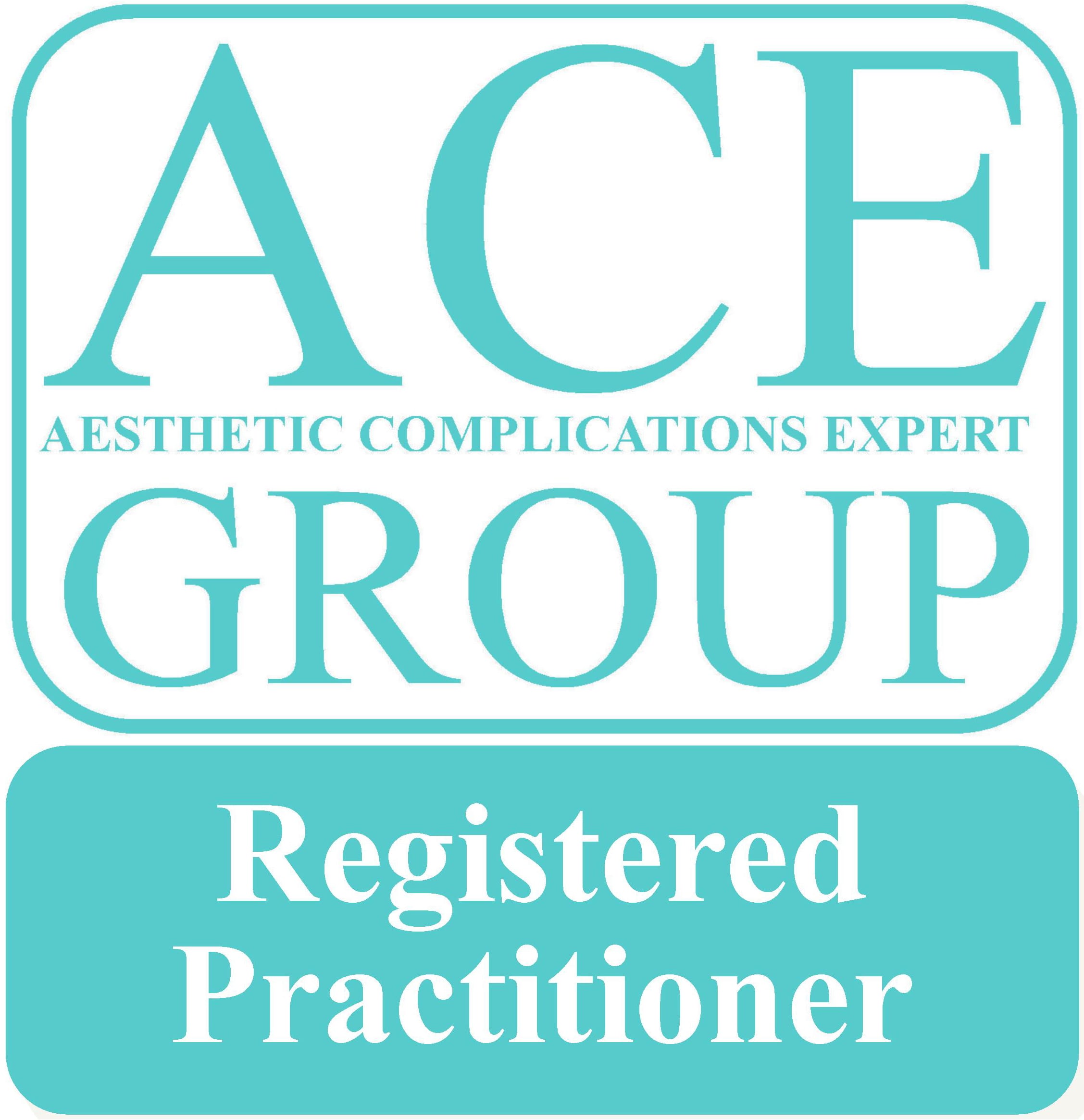You don’t have to be a teenager to suffer from acne-prone skin. Statistics reveal that 50% of women develop acne during their adult life, a skin condition that not only can scar skin but also cause emotional distress, leading to poor self-image and depression.
There are many factors that can cause you to develop acne. From poor diet, stress, and an unsuitable skincare routine, to genetics and hormonal changes. They can all cause your skin to breakout in blemishes, pimples or zits, making acne a complex condition to treat.
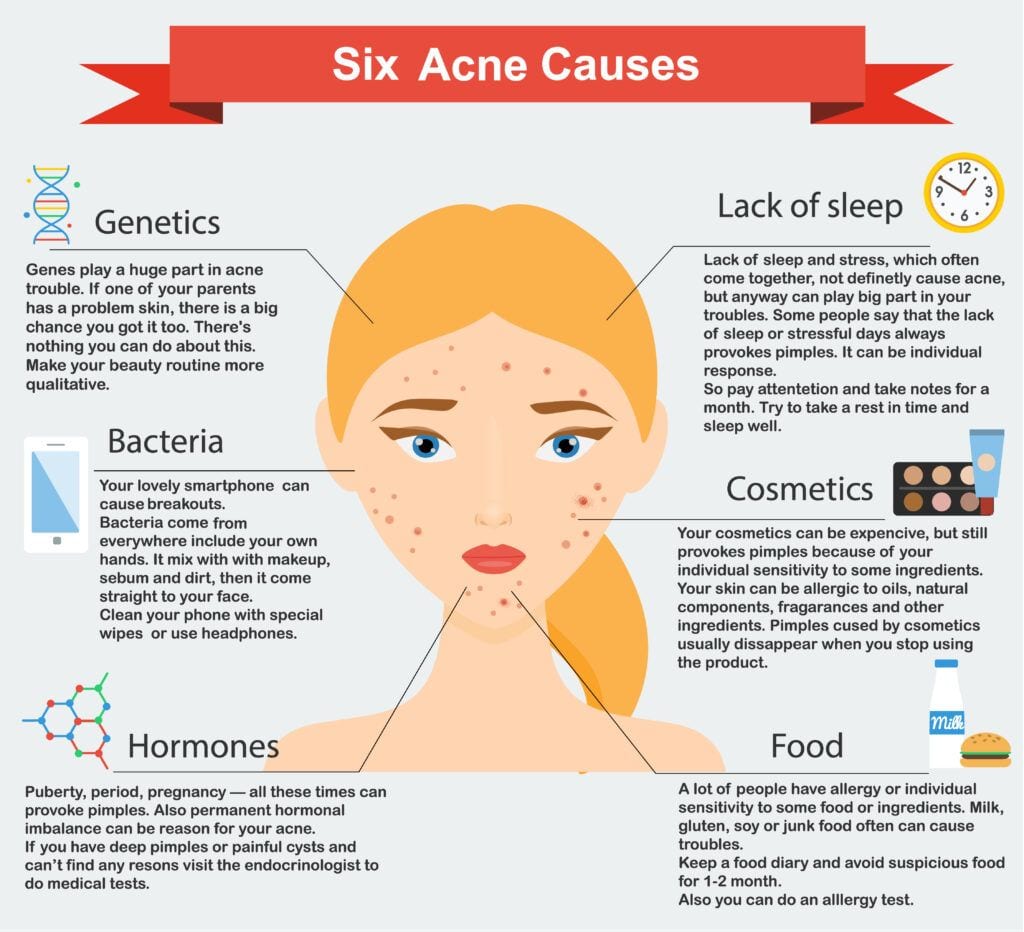
Adult acne can also be the result of congested skin. As pores become clogged with dead skin cells, dirt, oil, and bacteria, you are more likely to experience spots and whiteheads. I frequently see women who have developed acne after adopting a richer skincare routine to combat lines and saggy skin. An anti-ageing cream can be great for tackling wrinkles and making skin firmer, but if it’s not suited to your type of skin, it may actually be doing more harm than good. Blemish-prone skin will become even more congested when using richer, anti-ageing face oils and heavy moisturisers. Moreover, if you are over 30, you may find that acne products are too aggressive for your skin, making it drier and more sensitive. So finding a product that does both, minimises blemishes and helps reduce the appearance of wrinkles, may seem like mission impossible.
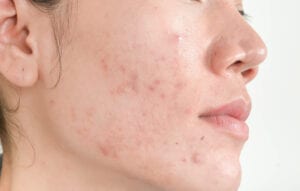
If you regularly wash your face, exfoliate, moisturise, and wear sunscreen every day, and your skin is still experiencing frequent breakouts, whether in the form of a rash of whiteheads or the cystic, under-the-skin kind of acne, you may want to consider making some changes to your lifestyle and putting in place a skincare routine that can help you alleviate the symptoms and significantly improve the appearance of your skin.
Here are my top five treatments to help you keep acne at bay:
- Topical skincare
As a doctor, I always look for evidence-based science behind the products I recommend as I want to make sure they deliver the desired results while keeping my clients safe.
This is the reason why I have become an authorised physician of Obagi skincare. Their clinically proven product range is designed to target acne and relieve skin from blemishes fast, while promoting its future health.
When treating complex skin conditions such as acne, I prefer working with a skincare system instead of individual products. An effective skincare routine follows a protocol, meaning you have to follow a number of steps when using the products. This means it’s a lot easier to work with one range of products that addresses every single step of the recommended protocol and has been formulated for a particular skin type and concern.
Obagi’s CLENZIderm M.D.™ System is my most reliable treatment for adult skin that’s prone to acne. With clinically proven ingredients that penetrate deep into the skin’s pores, it helps heal breakouts quickly, while preventing the appearance of new ones.
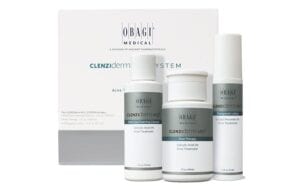
The system follows a three-step protocol:
Step 1: Daily Care Foaming Cleanse
A lovely light formula containing 2% salicylic acid to wash away impurities and clear up blemishes and menthol to calm and soothe irritated skin. It not only washes away your make-up, but starts to cleanse your skin of oils and bacteria.
Step 2: Pore Therapy
An effective but gentle toner to unclog pores with 2% salicylic acid to get rid of dead skin cells. Your skin feels clearer and fresher after using this.
Step 3: Therapeutic Lotion
A refreshing balm with 5% benzoyl peroxide to target bacterial infection deep within the pores and achieve a clearer, healthier-looking complexion. It tingles slightly on application but soon settles, and your skin feels smoother and looks noticeably clearer.
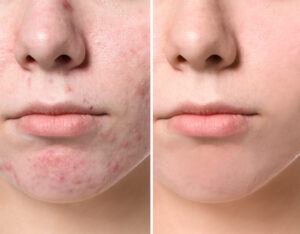
If you are in your 20s or 30s, the Obagi 360 System is a great all rounder to help combat breakouts, clogged pores and address early signs of ageing. The system includes:
- An exfoliating cleanser, perfect to brighten a dull complexion.
- A skin lotion with 0.5% Retinol to improve uneven texture and minimise the appearance of lines and wrinkles. You can use a retinoid (tretinoin) instead if you want something a bit stronger and faster-working.
- A broad spectrum SPF30 suncream to protect you from harmful UV-A, UV-B rays and give your skin long-lasting youth and radiance.
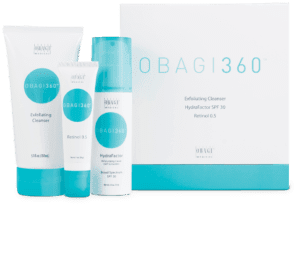
You can find out more about the whole range of Obagi’s products on my blog: https://www.dsouzaaesthetics.com/blog/how-obagi-can-transform-your-skin/
2. Skin Peels
A chemical peel is a cosmetic procedure used to remove damaged skin cells and promote the generation of new ones, revealing the healthier, more radiant skin underneath. They are great if you are experiencing acne scarring and want to diminish its appearance.
A mild acid solution is applied over your face to exfoliate and peel off dead skin and pore-clogging impurities. The acid purposefully causes injury to the surface skin cells, stimulating the production of brand new ones. As a result, your skin will look more even, glowy, and fresh.
I love the Obagi Blue Peel Radiance, a dermatologist-approved peel that exfoliates and deeply penetrates your skin to improve its overall appearance.
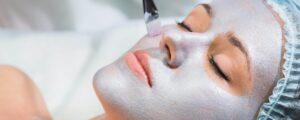
This peel is salicylic acid-based, a type of acid which exfoliates, relieves congested pores and has anti-bacterial properties. This means the peel can deeply penetrate skin and dissolve the bonds between surface skin cells, activating the process that unclogs pores.
It is absolutely brilliant for acne scarring as well as treating fine lines and wrinkles, rough, and uneven skin.
The peel can also be adapted to your own personal needs, depending on your skin type, sensitivity and the severity of imperfections. The treatment is very swift, under thirty minutes and has no downtime. You will be able to see immediate results as your skill will appear younger, more even and healthily radiant.
Please contact me if you would like to make an appointment for an Obagi Blue Peel Radiance.
3. Microneedling
Microneedling is an aesthetic procedure that uses a head of tiny needles to puncture the very first layer of skin, which is responsible for acne scars. The idea is to break down the skin in order to stimulate your body’s own repair process and boost the production of more collagen.
Microneedling is brilliant to smooth scarring, reduce the appearance of wrinkles and fine lines and elevate the overall texture of your skin. A topical numbing cream is applied to the skin first, then the microneedling device is used all over your face and jawline. Specific problem areas can be targeted by using a deeper needle length. If numbing cream is used, the procedure is not painful, but you are aware of the vibrations caused by the needles. It takes about 30 minutes to treat the entire face.
After the treatment, initially your skin will look quite red, but after a couple of days it will feel firmer and rejuvenated. And after a course of three or more treatments, you will notice significant improvements in fine lines and wrinkles, the reduction of scars, and a smoother, more youthful appearance.
Look out for an upcoming blog with lots more information on microneedling!
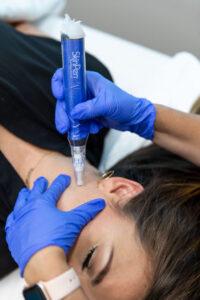
4. Laser Treatment
If your skin has been severely marked by acne, there are different types of laser and light therapies to help you minimise the appearance of scars.
Laser treatment for acne scars works by shooting heat and light on the top layers of your skin to rupture scar tissue. As the scar tissue breaks apart, heat and light from the laser also promote new, healthy skin cells to grow, forming new skin. During the procedure, the heat of the laser also draws blood flow to the scar area, targeting the blood vessels in the scar. This reduces inflammation and accelerates the healing of your skin.
You may experience a slight redness in the treated area, which should fade pretty quickly, allowing you to return to your normal activities straight away.
5. Diet
To maximise the effectiveness of your acne treatments, you may want to adopt a diet which is friendlier to your skin and helps you minimise breakouts.
This doesn’t mean you have to let go of all foods you love. It simply involves breaking bad eating habits and introducing more nutrients to your meals.

So, what changes can you bring in your diet to improve acne-prone skin?
- Drink more water and ensure you don’t become dehydrated.
- Cut back on processed sugar and keep your daily intake within two to four servings of the fructose found in fruit.
- Reduce the amount of alcohol you drink, as alcohol contains a high level of sugar. Honestly you will be amazed by the positive changes in your skin achievable through abstinence!
- Eat less dairy or avoid it altogether. Studies reveal that hormones in milk can interact with our own hormones, confusing our body’s endocrine system, what can cause breakouts.
- Add more green leafy vegetables to your meals. Broccoli, cauliflower, celery, cucumber, kale, lettuce, onions, peas, peppers and spinach are rich in antioxidants and the more you eat, the clearer your skin and the healthier your body are going to be.
- Make berries part of your daily treats, they are also rich in antioxidants.
- Choose the right nibbles. Nuts are great to have in between meals, but make sure you choose those that contain three acne-fighting nutrients — vitamin E, selenium, and magnesium. You find these in macadamia nuts, almonds, hazelnuts, and chestnuts.
- Drink at least one cup of green tea a day. Green tea is rich in polyphenols, a type of micronutrients packed with antioxidants. They help increase blood-flow and oxygen to the skin, improving its overall look and most importantly, health.
If you suffer from regular breakouts and acne-prone skin and would like to find out more about how I can help you transform your complexion by restoring its health and radiance, click here to book your free consultation.
